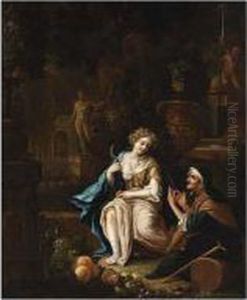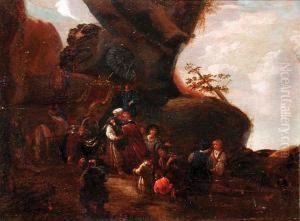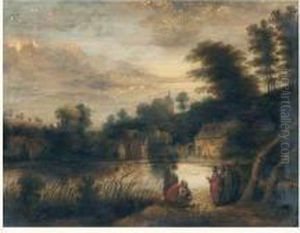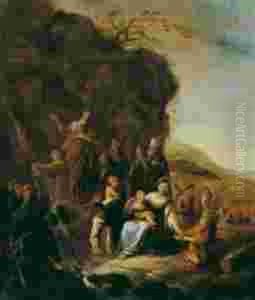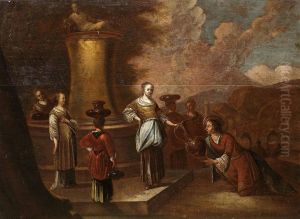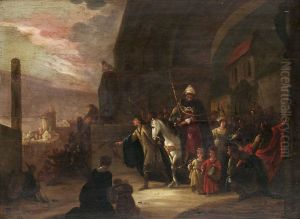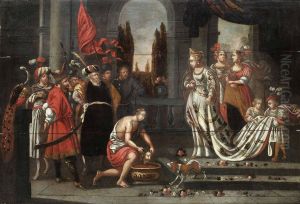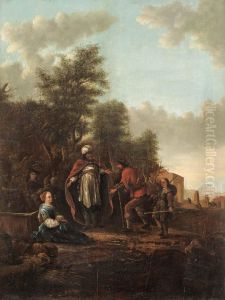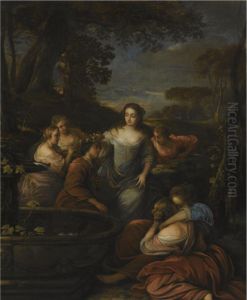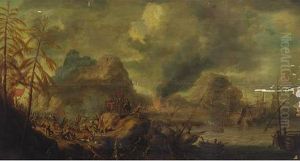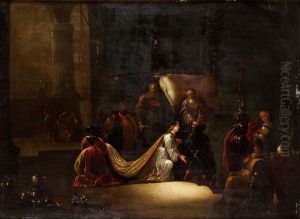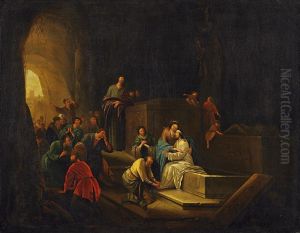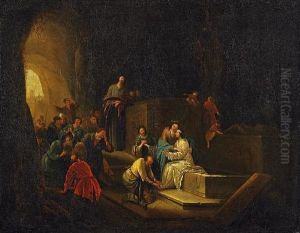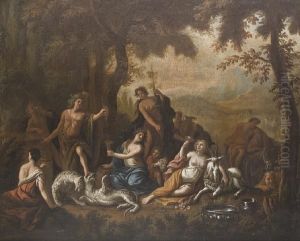Jacob Jacobsz De Wet Paintings
Jacob Jacobsz de Wet was a prominent Dutch artist of the 17th century, known primarily for his religious and mythological paintings, as well as his skilled portraits. Born in Haarlem in 1610, de Wet was a key figure in the Dutch Golden Age of painting, a period characterized by unprecedented wealth, cultural pride, and the production of a vast quantity of art.
De Wet began his artistic training in Haarlem, a city renowned for its vibrant artistic community. He quickly distinguished himself as a talented painter, and his works were sought after for their depth of emotion, attention to detail, and vivid portrayal of biblical and mythological themes. Although the details of his apprenticeship are not well-documented, it is known that de Wet was deeply influenced by the works of Rembrandt van Rijn, among others, which is evident in his use of dramatic lighting and powerful character expressions.
Throughout his career, Jacob Jacobsz de Wet was highly regarded for his contributions to religious art. He was particularly adept at capturing the essence of biblical stories, translating them into scenes that were both spiritual and human. His paintings often featured intricate details and a rich palette that added a sense of realism and immediacy to his subjects.
In addition to his religious works, de Wet also produced a number of portraits and mythological scenes. His portraits are valued for their psychological depth and the skill with which he captured the personality and status of his subjects. Meanwhile, his mythological paintings are celebrated for their imaginative interpretation of ancient stories, brought to life with vivid imagery and emotional intensity.
De Wet's influence extended beyond his own works. He was a respected teacher in Haarlem, where he trained a number of pupils who would go on to become successful artists in their own right. Through his teaching, de Wet played a significant role in shaping the direction of Dutch art, passing on his techniques and artistic vision to future generations.
Jacob Jacobsz de Wet passed away in 1675, leaving behind a legacy of artistic excellence that has continued to inspire and captivate audiences. His work remains an important part of the Dutch Golden Age, reflecting the era's fascination with religion, myth, and the human experience.
